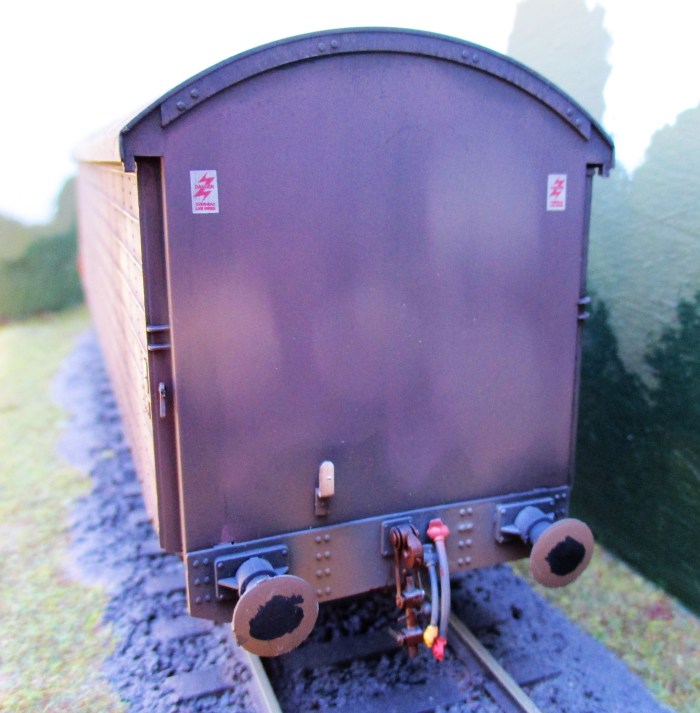A meeting this afternoon with Graham. He brought his ‘Tin Turtle’ with him for some gauging tests. A little trimming was required, but it soon had good clearance. We may still have issues with the tallest wagon required on the layout, to this end Graham has purchased a kit of an ambulance covered wagon so that we can test further. This part of the layout will now be left until we can test.
More work has been completed over the weekend including work on the back-scene, drainage ditch, rough ground between the ballasted area and the dilapidated barn.
One thing that I have tackled today is the track on the first board. We found out that the temporary narrow gauge railways of WW1 used unseasoned or dipped sleepers, so they were basic wood colour and not the treated dark brown colour. I experimented and mixed up some basic wood coloured paint and painted the sleepers, when dry I added some Coloron Wood Dye over the paint. It seems to have worked, but I will check in the morning and add another coat of Wood Dye if necessary. I have also painted the track sides and highlighted the chair with dark rust paint.
Below are some photo’s in the order I completed them.












































